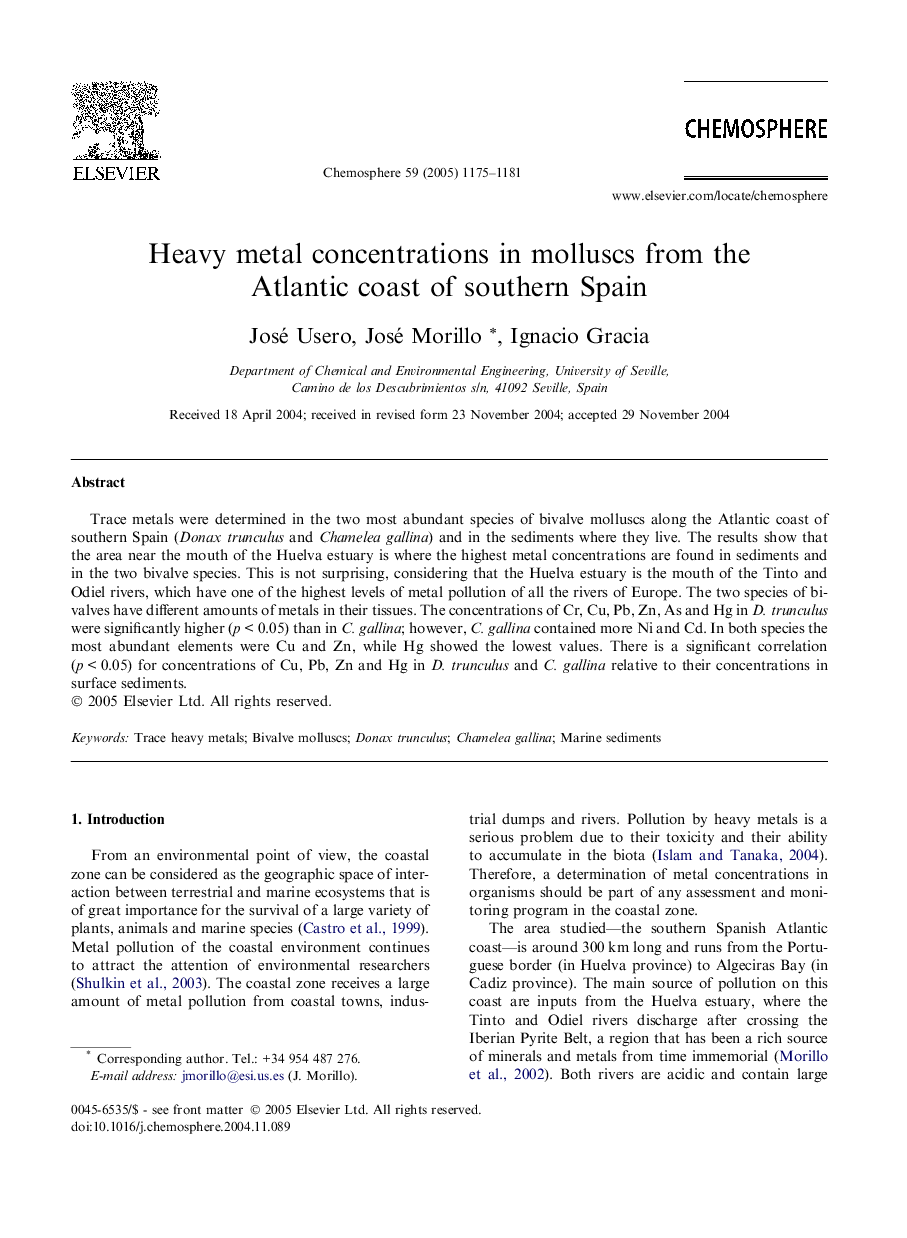| Article ID | Journal | Published Year | Pages | File Type |
|---|---|---|---|---|
| 9452194 | Chemosphere | 2005 | 7 Pages |
Abstract
Trace metals were determined in the two most abundant species of bivalve molluscs along the Atlantic coast of southern Spain (Donax trunculus and Chamelea gallina) and in the sediments where they live. The results show that the area near the mouth of the Huelva estuary is where the highest metal concentrations are found in sediments and in the two bivalve species. This is not surprising, considering that the Huelva estuary is the mouth of the Tinto and Odiel rivers, which have one of the highest levels of metal pollution of all the rivers of Europe. The two species of bivalves have different amounts of metals in their tissues. The concentrations of Cr, Cu, Pb, Zn, As and Hg in D. trunculus were significantly higher (p < 0.05) than in C. gallina; however, C. gallina contained more Ni and Cd. In both species the most abundant elements were Cu and Zn, while Hg showed the lowest values. There is a significant correlation (p < 0.05) for concentrations of Cu, Pb, Zn and Hg in D. trunculus and C. gallina relative to their concentrations in surface sediments.
Related Topics
Life Sciences
Environmental Science
Environmental Chemistry
Authors
José Usero, José Morillo, Ignacio Gracia,
